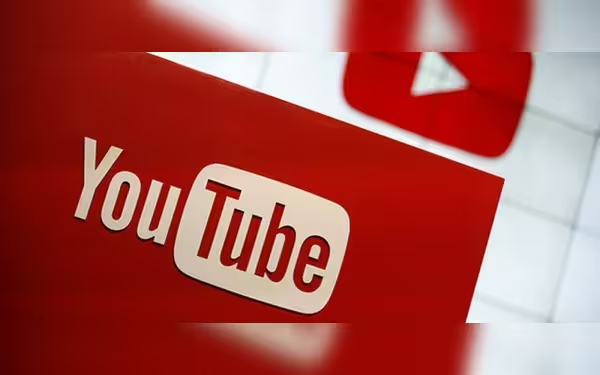Saturday, November 16, 2024 07:47 PM
YouTube Unveils New Tools for TV-Style Content Creation
- YouTube introduces tools for TV-focused content creation.
- Streaming services dominate television viewing time.
- Creators encouraged to produce episodic content.
 Image Credits: brecorder
Image Credits: brecorderYouTube launches new tools for creators to enhance TV-style content, adapting to the growing trend of streaming services.
YouTube, the popular video-sharing platform owned by Alphabet, has recently introduced new tools aimed at enhancing the experience for creators, particularly as it seeks to compete with streaming giants like Netflix. With the rise of smart TVs, which are now a common fixture in many households, YouTube is making significant strides in reaching audiences on the biggest screen in the home: the television.
As more people turn to their TVs for entertainment, YouTube has recognized the need to adapt its content to fit this format. According to YouTube chief Neal Mohan, televisions are becoming 'the fastest-growing screen' for video consumption. This shift is evident as viewers worldwide watch over a billion hours of YouTube videos daily on their home televisions. The platform's subscription streaming service is also gaining popularity, offering live broadcasts on more than 100 channels in collaboration with existing networks.
In a bid to capitalize on this trend, YouTube has rolled out new features that allow creators to optimize their content for large screens. These tools will enable creators to present their videos in a format that resembles traditional television shows, complete with episodes and seasons. This approach not only caters to the viewing habits of audiences but also aligns with the binge-watching culture that has emerged in the age of on-demand content.
Recent statistics highlight the growing influence of streaming services on television viewing. In July, streaming accounted for 41.4 percent of total television viewing time in the United States, with YouTube leading the charge as the first streaming platform to capture over 10 percent of that market share. Netflix follows closely behind with an 8.4 percent share. This data underscores the importance of YouTube's new tools, which aim to enhance the viewing experience and attract more creators to produce TV-style content.
Moreover, YouTube's product management director, Thomas Kim, emphasized the platform's expanding presence in living rooms across various demographics. He noted that many creators are eager to develop more TV-style shows, indicating a shift in content creation that aligns with audience preferences. Kim pointed out that there have been successful examples of creators producing episodic content, which resonates well with viewers.
YouTube's latest initiatives reflect a strategic move to strengthen its position in the competitive streaming landscape. By providing creators with the tools to produce content that appeals to television audiences, YouTube is not only enhancing viewer engagement but also fostering a new wave of creativity among its creators. As the platform continues to evolve, it will be interesting to see how these changes impact the future of content consumption and the relationship between creators and their audiences.













